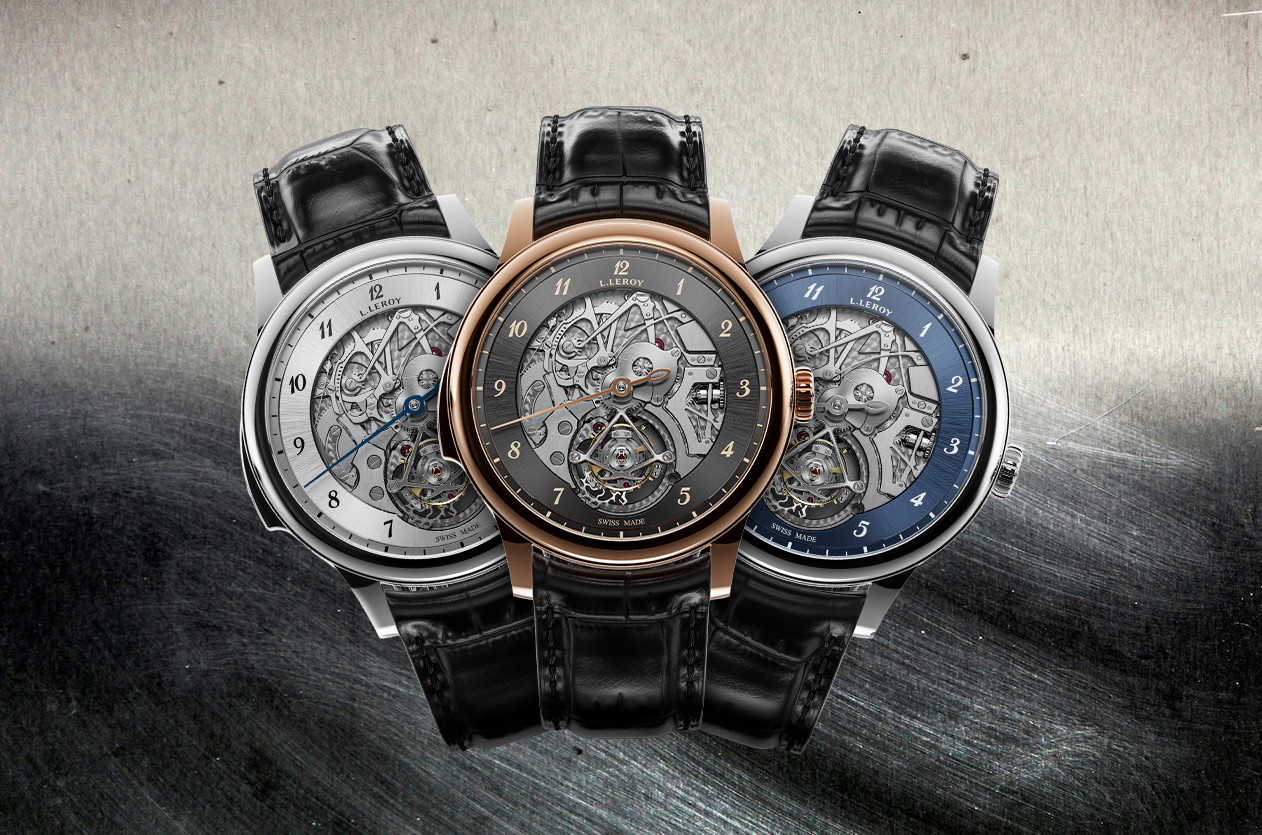
Introducing Hamilton Unveils the Jazzmaster Skeleton 40mm in Empire Green
Welcome to the hub of the horoloy
How much impact can magnetism have on your watch’s accuracy?

A question often posed by watch enthusiasts is, How accurate is my watch? For those owning a manual mechanical timepiece, the query extends to another concern: How long will it take before I need to wind it again? While these are straightforward questions, the answers can be surprisingly complex, with various factors influencing the precision of mechanical movements.
 When it comes to accuracy, mechanical watches, especially those with automatic movements, can vary quite significantly. A typical automatic movement, for example, might have an error margin of +/- 5 seconds per day. The plus/minus symbol is commonly used in horological terminology, signifying that the timepiece could either gain or lose this amount, depending on the specifics of its movement. In simpler terms, your watch may run five seconds faster or slower over the course of a day.
When it comes to accuracy, mechanical watches, especially those with automatic movements, can vary quite significantly. A typical automatic movement, for example, might have an error margin of +/- 5 seconds per day. The plus/minus symbol is commonly used in horological terminology, signifying that the timepiece could either gain or lose this amount, depending on the specifics of its movement. In simpler terms, your watch may run five seconds faster or slower over the course of a day.
 We also tend to overlook the shock resistance of our watches, but shocks have always been a significant challenge for mechanical timepieces. Even a minor jolt, such as brushing your watch against a table or when you attend a party and clap while wearing your watch, can affect the precision of the movement. While many modern watches are engineered to withstand everyday bumps, some manufacturers go the extra mile, promoting their models as specially designed to resist shock impacts.
We also tend to overlook the shock resistance of our watches, but shocks have always been a significant challenge for mechanical timepieces. Even a minor jolt, such as brushing your watch against a table or when you attend a party and clap while wearing your watch, can affect the precision of the movement. While many modern watches are engineered to withstand everyday bumps, some manufacturers go the extra mile, promoting their models as specially designed to resist shock impacts.
The inner pieces of a mechanical watch are also vulnerable to external influences, with magnetic fields being a notable barrier. Exposure to magnets or strong electromagnetic forces can interfere with a watch's movement, causing it to deviate from its usual precision. This serves as a reminder that while a watch’s mechanical components may seem impervious to the world around them, factors like magnetism can quietly disrupt even the most finely tuned instruments.
 In our daily lives, we are constantly surrounded by objects that emit magnetic fields, such as speakers, smartphones, computers, televisions, and even household appliances like microwaves and refrigerators. Strong magnets, like those found in tools or smart headphones, can be particularly problematic for mechanical watches, potentially disrupting the movement and leading to timekeeping issues when in close contact.
In our daily lives, we are constantly surrounded by objects that emit magnetic fields, such as speakers, smartphones, computers, televisions, and even household appliances like microwaves and refrigerators. Strong magnets, like those found in tools or smart headphones, can be particularly problematic for mechanical watches, potentially disrupting the movement and leading to timekeeping issues when in close contact.
 A common question that often arises is whether airport security scanners pose a threat to watches. Airport scanners utilize various technologies and electromagnetic radiation, including radio waves, microwaves, visible light, millimeter-wave scanners, and X-rays. But how do these affect your watch?
A common question that often arises is whether airport security scanners pose a threat to watches. Airport scanners utilize various technologies and electromagnetic radiation, including radio waves, microwaves, visible light, millimeter-wave scanners, and X-rays. But how do these affect your watch?
When it comes to electromagnetic radiation, most forms do not interfere with mechanical watches. X-rays, for example, are not a concern, they do not produce magnetic fields and, therefore, do not impact the function of the watches. X-ray machines work by interacting with materials of different densities, but crucially, they do not generate magnetic fields. This means they are safe for your watch, whether it’s mechanical or quartz-powered.
The primary concern for mechanical watches, however, remains magnetic fields. These fields can arise from moving electrical charges or permanent magnets, such as those found in MRI machines (Magnetic Resonance Imaging). Fortunately, airport X-ray machines do not emit such magnetic fields. While some airport security machinery may generate weak magnetic fields, their strength diminishes quickly with distance, meaning they’re not strong enough to affect your watch, much like how the magnets in laptop lids don’t impact your watch while typing. So, rest assured, your mechanical watch should remain unaffected by airport security scanners.
 This brings us to an important question: How can we protect our watches from magnetic fields? Thankfully, some modern timepieces are specifically designed with anti-magnetic properties, featuring movements that are either engineered or shielded to resist the disruptive effects of magnetism.
This brings us to an important question: How can we protect our watches from magnetic fields? Thankfully, some modern timepieces are specifically designed with anti-magnetic properties, featuring movements that are either engineered or shielded to resist the disruptive effects of magnetism.

For example, the Rolex Milgauss is one of the most well-known magnetic-resistant watches. Capable of withstanding magnetic fields up to 1,000 gauss, the Milgauss far exceeds the threshold at which most mechanical watches begin to lose precision. In fact, the reliability and accuracy of a typical mechanical watch can be affected by magnetic fields as weak as 50 to 100 gauss.
 Another excellent example is the Omega Seamaster Aqua Terra >15,000 Gauss, which uses a silicon balance spring and a protective case to withstand magnetic fields up to an impressive 15,000 gauss. This model was the first to feature Omega's Co-Axial calibre 8508, combining precision with exceptional resistance to magnetism.
Another excellent example is the Omega Seamaster Aqua Terra >15,000 Gauss, which uses a silicon balance spring and a protective case to withstand magnetic fields up to an impressive 15,000 gauss. This model was the first to feature Omega's Co-Axial calibre 8508, combining precision with exceptional resistance to magnetism.
 In 2014, Rolex introduced the Syloxi hairspring in its Calibre 2236. This silicon hairspring represents a new generation of Rolex movements, offering enhanced magnetic resistance. Other brands have adopted similar innovations, such as using Nivarox hairsprings, which is made by iron-nickel alloys produced by Nivarox-FAR, a Swatch-owned company that specializes in crafting oscillating and escapement parts for greater durability and resistance to external factors like magnetism.
In 2014, Rolex introduced the Syloxi hairspring in its Calibre 2236. This silicon hairspring represents a new generation of Rolex movements, offering enhanced magnetic resistance. Other brands have adopted similar innovations, such as using Nivarox hairsprings, which is made by iron-nickel alloys produced by Nivarox-FAR, a Swatch-owned company that specializes in crafting oscillating and escapement parts for greater durability and resistance to external factors like magnetism.

Incase your watches are affected by the magnetic field, you can use a demagnetizer, which works by generating a fluctuating magnetic field that gradually reduces the magnetism in an object, effectively neutralizing any unwanted magnetic charge.
 With these advancements, the risk of magnetism compromising your watch’s performance is becoming less of a concern, as more manufacturers implement robust solutions to ensure their timepieces remain precise. Watches certified with the Master Chronometer rating, which feature silicon balance springs, are immune to magnetic fields. In fact, it’s nearly impossible to meet the stringent Master Chronometer criteria without using a silicon balance spring or another non-magnetic material. So, as long as your watch holds a Master Chronometer certification, you don’t need to worry much about anything other than the possibility of scratching it.
With these advancements, the risk of magnetism compromising your watch’s performance is becoming less of a concern, as more manufacturers implement robust solutions to ensure their timepieces remain precise. Watches certified with the Master Chronometer rating, which feature silicon balance springs, are immune to magnetic fields. In fact, it’s nearly impossible to meet the stringent Master Chronometer criteria without using a silicon balance spring or another non-magnetic material. So, as long as your watch holds a Master Chronometer certification, you don’t need to worry much about anything other than the possibility of scratching it.

Introducing L.Leroy Unveils the Osmior “Bal du Temps”

Introducing The New A. Lange & Söhne Richard Lange Jumping Seconds

Hands on The Summit Collection: A Strong First Step for New Brand Earthen

Introducing Naissance d’une Montre 3, Ferdinand Berthoud’s Masterpiece for the Tenth Anniversary

News Trump Hits Swiss Imports With 39% Tariffs

Editorial What is the reason behind the scarcity of Rolex watches in boutiques?

News Dubai Watch Week 2025 Will Be the Largest Ever with 90 Brands Participating

Technical The Frequency, Why It Matters in Mechanical Watches

Editorial The Secrets of Watch Case Design

Editorial Abraham-Louis Breguet, The Father of Modern Horology

Introducing Hanhart Unveils the Limited Edition Preventor HD12 Silk Purple
Comment Delete Text
This page is available in English only. Please click below to visit Arabic Home page!